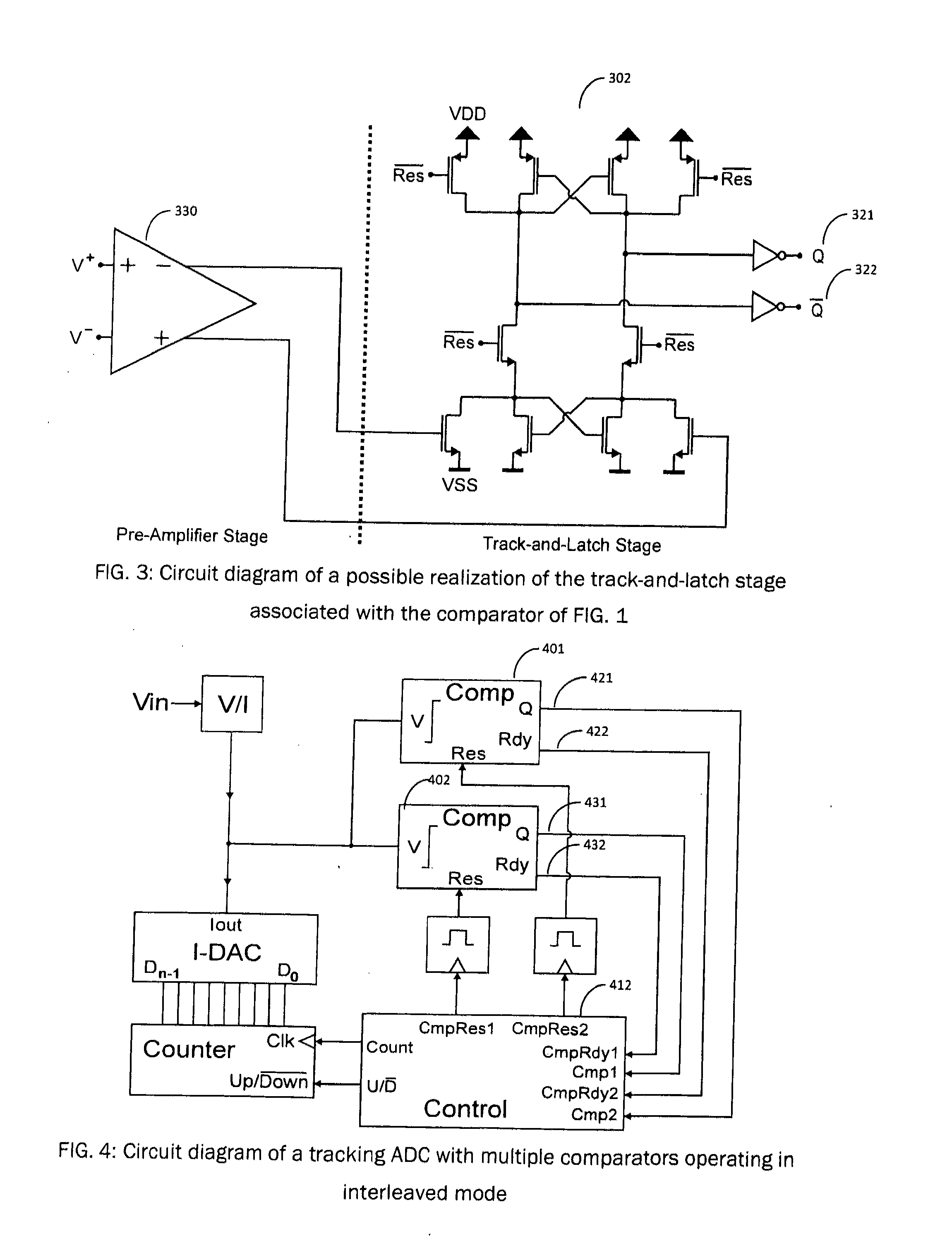Tracking analog-to-digital converter (ADC) with a self-controlled variable clock
a technology of analog-to-digital converter and self-controlled variable clock, which is applied in the direction of analog-to-digital converters, instruments, transmission systems, etc., can solve the problems of difficult design of such a device, relatively short settling time, and relatively long settling time, and achieve significant speed increase, low power consumption, and speed of tracking adc
- Summary
- Abstract
- Description
- Claims
- Application Information
AI Technical Summary
Benefits of technology
Problems solved by technology
Method used
Image
Examples
Embodiment Construction
[0061]In general, an ADC based upon the comparison of the analog input and the D / A-converted output can be operated with currents, voltages or charges. If the comparison is done with currents, a positive and a negative current are added and converted to a voltage by the output impedance of the current sources, where one of the currents is derived from the analog input, and the other current is derived from the D / A-converted digital output. The voltage is then fed to the input of a comparator.
[0062]FIG. 1 shows a circuit diagram for a tracking ADC with a self-controlled variable clock according to a preferred embodiment of the present invention. The tracking ADC of FIG. 1 comprises an up-down counter 111, whose output signal is a digital counter signal Dout 125. This digital counter signal Dout 125 is fed into a DAC 110. In FIG. 1 the analog input voltage Vin 124 is converted to a current by component 114 (V / I-Converter, transconductance) and then compared with a current derived from...
PUM
 Login to View More
Login to View More Abstract
Description
Claims
Application Information
 Login to View More
Login to View More - R&D
- Intellectual Property
- Life Sciences
- Materials
- Tech Scout
- Unparalleled Data Quality
- Higher Quality Content
- 60% Fewer Hallucinations
Browse by: Latest US Patents, China's latest patents, Technical Efficacy Thesaurus, Application Domain, Technology Topic, Popular Technical Reports.
© 2025 PatSnap. All rights reserved.Legal|Privacy policy|Modern Slavery Act Transparency Statement|Sitemap|About US| Contact US: help@patsnap.com



